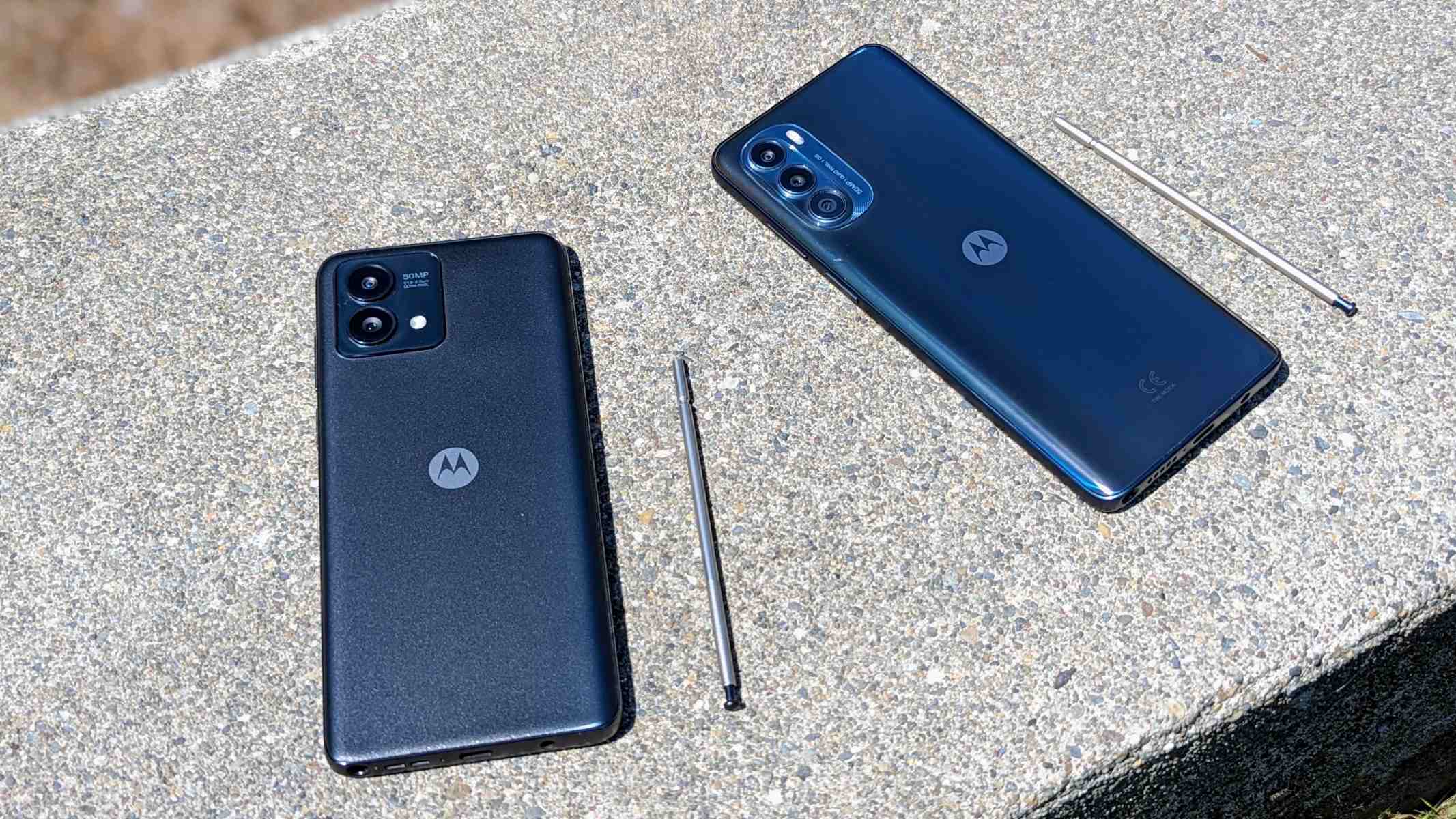Introduction
Welcome to the world of the Moto G Stylus, a versatile and powerful device that seamlessly integrates into your daily life. As you navigate the digital landscape, you may encounter moments when your device's performance seems to lag or stutter. This can be attributed to the accumulation of temporary data stored in the cache. In this article, we will delve into the intricacies of cache management on the Moto G Stylus, exploring the importance of clearing the cache and providing a comprehensive guide on how to optimize your device's performance.
The Moto G Stylus is designed to cater to your diverse needs, from capturing stunning photos with its high-resolution camera to multitasking with various apps. However, as you immerse yourself in this digital ecosystem, the cache gradually accumulates, potentially leading to diminished performance. By understanding the role of cache and how it impacts your device, you can effectively maintain the Moto G Stylus's efficiency and responsiveness.
Throughout this guide, we will uncover the underlying mechanisms of cache storage and its impact on your device's performance. Additionally, we will walk you through the step-by-step process of clearing the cache on the Moto G Stylus, empowering you to optimize its functionality and ensure a seamless user experience.
Join us as we embark on a journey to unleash the full potential of your Moto G Stylus by mastering the art of cache management. Let's dive into the world of digital optimization and elevate your device's performance to new heights.
What is Cache?
Cache, in the realm of digital devices such as the Moto G Stylus, serves as a temporary storage location for frequently accessed data and resources. When you use various apps, browse the web, or engage in activities that require data retrieval, the device stores information in the cache to expedite future access. This mechanism aims to enhance the device’s efficiency by reducing the time it takes to retrieve data, thereby optimizing performance and user experience.
Imagine the cache as a quick-access repository where the Moto G Stylus stores pieces of information that it anticipates you will need again. This proactive approach enables the device to swiftly retrieve data, such as images, web pages, and app data, without repeatedly fetching it from the original source. Consequently, this accelerates the loading times of apps and web content, contributing to a seamless and responsive user experience.
It’s important to note that the cache is not limited to a single type of data; rather, it encompasses a wide array of resources, including temporary files, images, scripts, and other elements that comprise the digital landscape you interact with daily. By leveraging the cache, the Moto G Stylus optimizes its performance, conserves bandwidth, and minimizes the strain on system resources, ultimately enhancing the overall usability of the device.
However, as the cache accumulates over time, it can lead to potential performance degradation if not managed effectively. This is where the significance of clearing the cache comes into play. By understanding the role of cache in the Moto G Stylus’s functionality, you can harness its benefits while proactively addressing the need for periodic optimization.
Now that we’ve unraveled the concept of cache and its pivotal role in device performance, let’s delve deeper into the reasons why clearing the cache on the Moto G Stylus is crucial for maintaining its optimal functionality.
Why Clear Cache on Moto G Stylus?
As you navigate through the digital landscape with your Moto G Stylus, the accumulation of cached data can inadvertently impact the device’s performance. Over time, the cache may contain outdated or redundant information, potentially leading to sluggish responsiveness and diminished efficiency. Clearing the cache on your Moto G Stylus is essential for several compelling reasons:
- Performance Optimization: By clearing the cache, you can effectively declutter the device’s storage, removing unnecessary data that may hinder its performance. This process allows the Moto G Stylus to operate more efficiently, resulting in smoother navigation, faster app launches, and improved overall responsiveness.
- Memory Management: The cache occupies a portion of the device’s internal memory. As the cache grows, it can encroach upon valuable storage space, potentially limiting the available memory for essential functions and user data. Clearing the cache liberates this space, ensuring that the Moto G Stylus has ample room to accommodate new data and operate optimally.
- App Stability and Functionality: Over time, cached data associated with apps may become corrupted or outdated, leading to unexpected errors or malfunctions. By clearing the cache, you can mitigate these issues and promote the stability and reliability of the apps installed on your Moto G Stylus, thereby enhancing the overall user experience.
Moreover, clearing the cache serves as a preemptive measure to address potential performance issues before they escalate. It allows you to proactively manage the device’s resources, ensuring that it operates at its full potential without being encumbered by unnecessary cached data.
By understanding the significance of clearing the cache on the Moto G Stylus, you can take proactive steps to optimize its performance and maintain a seamless user experience. Now, let’s explore the step-by-step process of clearing the cache on your Moto G Stylus, empowering you to harness the full potential of your device.
How to Clear Cache on Moto G Stylus
Clearing the cache on your Moto G Stylus is a straightforward process that can significantly enhance the device’s performance and responsiveness. Follow these simple steps to effectively clear the cache:
- Accessing Recovery Mode: Begin by powering off your Moto G Stylus. Once the device is powered down, press and hold the Volume Down button and the Power button simultaneously until the device powers on. Release the Power button but continue holding the Volume Down button until you see the Recovery Mode menu.
- Navigating Recovery Mode: In Recovery Mode, use the Volume Down button to scroll and highlight “Recovery,” then press the Volume Up button to select it. This action will prompt the device to enter Recovery Mode, displaying the Android robot with an exclamation mark.
- Accessing Recovery Menu: While in Recovery Mode, press and hold the Power button, then quickly press the Volume Up button once. This combination will display the Recovery Menu, providing various options for managing the device.
- Clearing Cache Partition: Use the Volume Down button to navigate to the “Wipe cache partition” option in the Recovery Menu, then press the Power button to select it. Follow the on-screen prompts to confirm the action, allowing the device to clear the cache partition effectively.
- Rebooting the Device: Once the cache partition is cleared, use the Volume Down button to highlight “Reboot system now,” then press the Power button to initiate the reboot process. Your Moto G Stylus will restart with a refreshed cache, optimizing its performance.
It’s important to note that clearing the cache on your Moto G Stylus does not delete any personal data or settings. Instead, it focuses on removing temporary cached files and data that may be impacting the device’s performance. By following these steps, you can effectively clear the cache and rejuvenate your Moto G Stylus, ensuring that it operates at its optimal capacity.
Now that you’ve mastered the art of clearing the cache on your Moto G Stylus, let’s explore the myriad benefits that accompany this optimization process, empowering you to make the most of your device’s capabilities.
Benefits of Clearing Cache on Moto G Stylus
Clearing the cache on your Moto G Stylus yields a multitude of benefits that directly contribute to optimizing the device’s performance and enhancing the user experience. By engaging in regular cache management, you can reap the following advantages:
- Improved Performance: Clearing the cache effectively declutters the device’s storage, resulting in improved performance, faster app launches, and smoother navigation. This optimization allows the Moto G Stylus to operate at its full potential, delivering a seamless and responsive user experience.
- Enhanced Storage Space: By removing unnecessary cached data, you free up valuable storage space on your Moto G Stylus. This ensures that the device has ample room to accommodate new data and apps, preventing storage constraints and promoting efficient memory management.
- App Stability and Reliability: Clearing the cache mitigates the risk of encountering app-related issues caused by corrupted or outdated cached data. This proactive measure promotes the stability and reliability of the apps installed on your Moto G Stylus, reducing the likelihood of unexpected errors or malfunctions.
- Optimized System Resources: Managing the cache optimizes the allocation of system resources, ensuring that the Moto G Stylus operates efficiently without being encumbered by unnecessary cached data. This results in improved battery life, reduced strain on the device’s components, and overall system optimization.
- Refreshing User Experience: Clearing the cache rejuvenates the Moto G Stylus, providing a refreshed user experience by eliminating the performance bottlenecks associated with accumulated cached data. This process revitalizes the device, allowing you to engage seamlessly with its features and functionalities.
By embracing the practice of clearing the cache on your Moto G Stylus, you empower the device to function optimally and maintain its peak performance. This proactive approach not only enhances the device’s efficiency but also ensures that you can fully leverage its capabilities without encountering performance hindrances.
With a clear understanding of the benefits that accompany cache management, you are well-equipped to optimize your Moto G Stylus and elevate your digital experience. By incorporating cache clearing into your device maintenance routine, you can harness the full potential of your Moto G Stylus and enjoy a seamless, responsive, and reliable user experience.

























